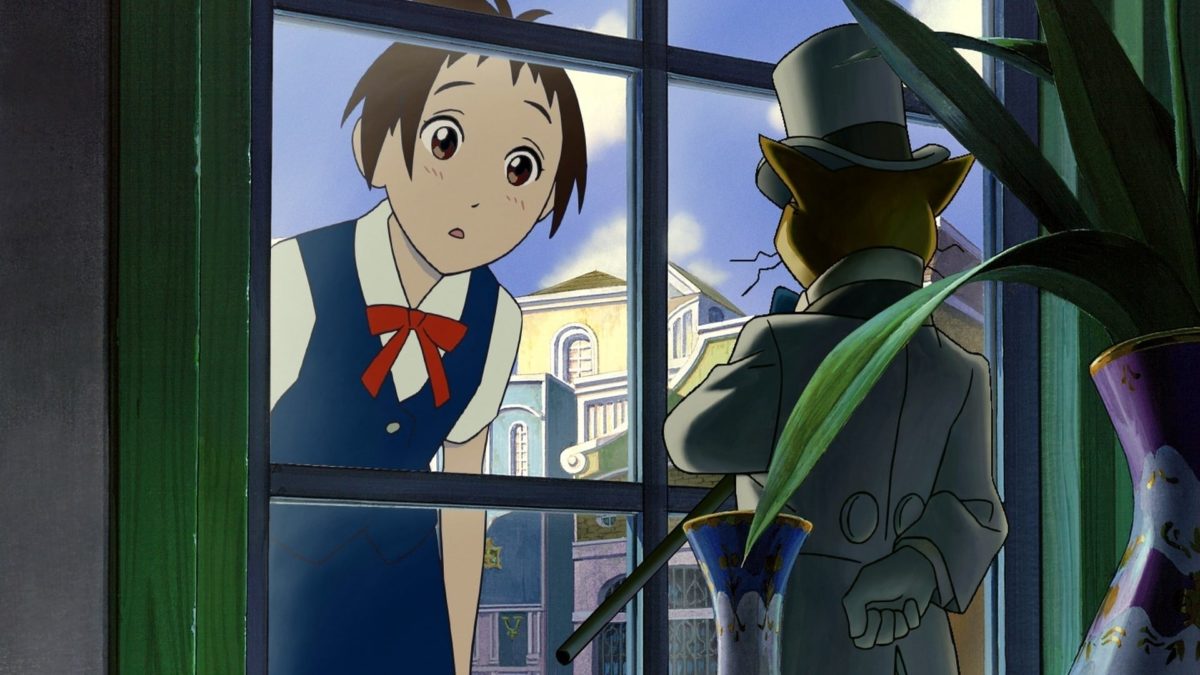Given how much of Studio Ghibli’s reputation rides on low-plot, high-vibe pictures, and how much I adore some of those films, trust that I don’t utter the following sentence lightly: The Cat Returns is too whimsical. It is a silly, lightweight story that follows whatever way the wind blows. It feels even more child-oriented than most other Ghibli features.
It isn’t inherently bad to have a high whimsy quotient, but it does set a ceiling on the film’s effectiveness. Indeed, the problem with The Cat Returns isn’t that any part of it is particularly bad, just that it’s insubstantial and insignificant. By the time you’re done watching, you won’t have had your emotions stirred or your heart expanded. You’ll simply have enjoyed the previous 75 minutes.
The film, second shortest among Ghibli’s works, started as a project for a theme park, then became a short, then became a feature film. That herky-jerk story production is evident: The film shifts gears multiple times with noticeable lurches in narrative momentum. It’s as if scenes and plot threads were not initially conceived as a continuous whole. The story is based off a manga, and I have no doubt the story would work better in a serialized format than it does a film.

I should take a step back and clarify that I enjoy The Cat Returns on the whole. The film is directed by longtime Ghibli animator Hiroyuki Morita, though it is a spinoff of a Hayao Miyazaki film, Whisper of the Heart, which I have never seen. Morita is no Miyazaki, but his film moves quickly and pleasingly. It is well-animated and inventive, with a couple of memorable settings and delightful set pieces.
The story is simple but a good structure on which to hang some fun scenes and character designs. Protagonist Haru is a bit shallower than some of Ghibli’s other heroes, as she just wants to be well-liked and “cool” — a word oft-repeated with reverence in this film. After she saves a cat who happens to be a prince in “Cat Kingdom,” she gets showered in feline gifts which cause inconvenience and unwanted strange looks. She also learns she’s been betrothed to the cat prince. She eventually recruits the aid of another cat, the suave Baron, to get her out of the betrothal despite the King of Cat Kingdom’s best efforts.
My favorite of the story’s segments is early on, when Maru is still in the “real world.” We get some immensely charming scenes of cats parading in front of her house to offer gifts to Maru. It’s the most dreamlike and fully-realized segment of the film. Another memorable bit occurs a few scenes later when Maru first finds herself in a strange cat-like dimension: her perspective on everything is distorted due to her human size. It’s a well-done Alice in Wonderland-style gag.

I watched with my two non-reading daughters, so we used the English dub, which is disappointingly phoned in and disjointed despite the talent in the cast. It’s not nearly as good a dub as the peak Ghibli films I’ve seen. My Neighbor Totoro, Spirited Away, Kiki’s Delivery Service all have better dubs.
The hand-drawn animation is very effective with some pleasing backgrounds. Classic animation is a dying art, so it’s always a delight to see it executed with love and talent; Morita may not be a particularly special director, but he’s an excellent animator, and it shows here. Again, this is not among Ghibli’s best, but it’s still a visual treat.
The Cat Returns a trifle of a film, delicious but not especially filling. It’s never bad, nor does it ever approach greatness.
Is It Good?
Good (5/8)
Dan is the founder and head critic of The Goods. Follow Dan on Letterboxd. Join the Discord for updates and discussion.

